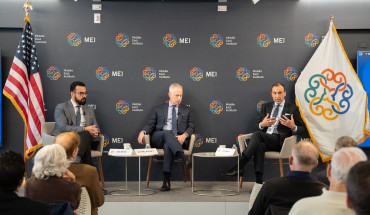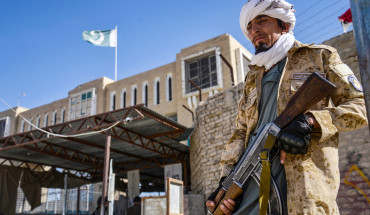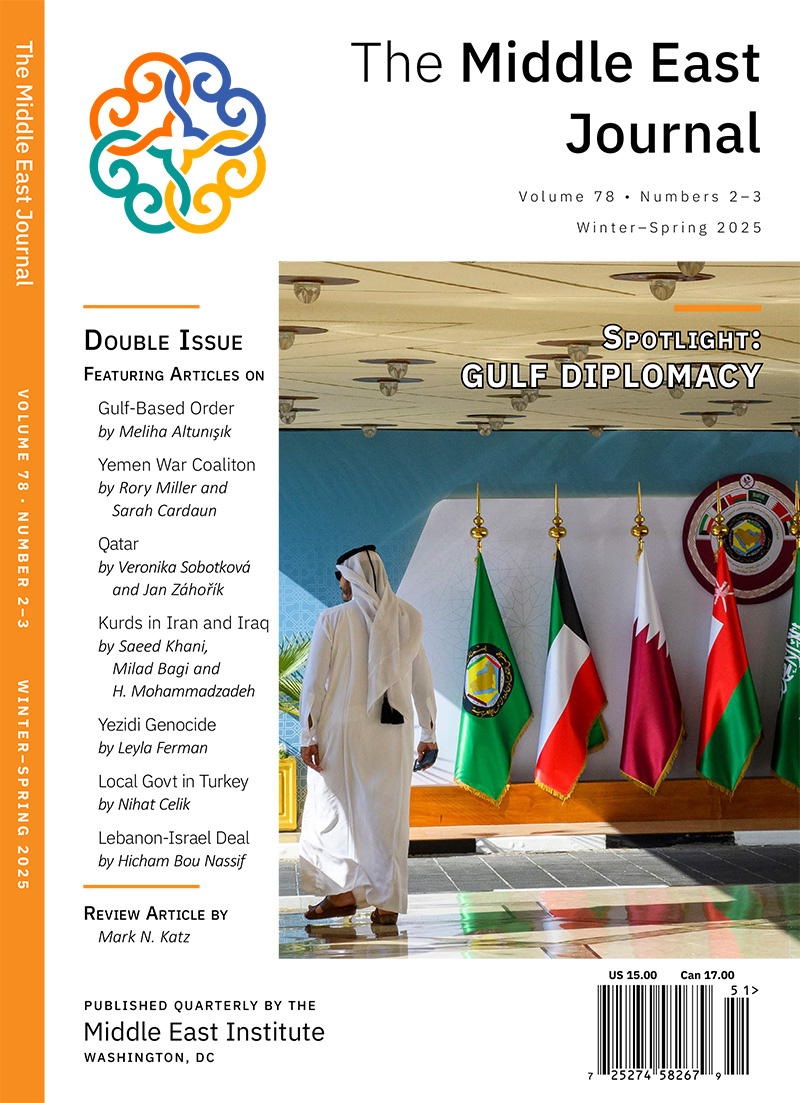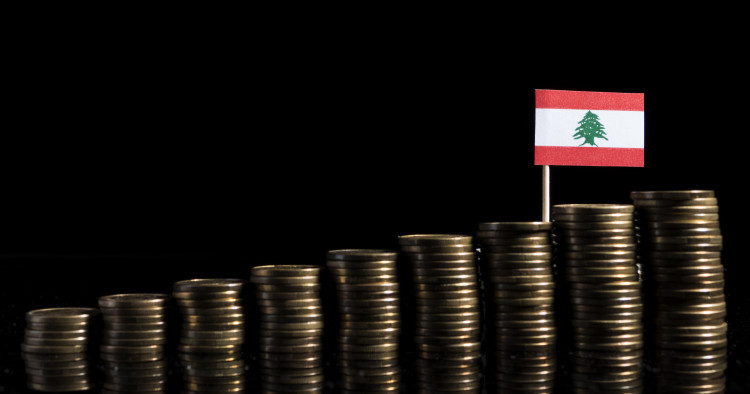The below article is part of the series "Seizing Lebanon's Moment," a joint initiative with the Italian Institute for International Political Studies (ISPI). The contributors to this series — who comprise top scholars, policymakers, and professionals from Lebanon, Europe, and the United States — set out to identify Lebanon's critical problems and propose specific reforms aimed at practitioners and officials dedicated to helping the country recover from its deep, multi-year crisis. The series has been compiled in a report, whose findings aim to carry forward the constructive policy dialogue initiated during this year's Mediterranean Dialogues Conference.
The current government in Lebanon is keen to encourage financial recovery and find a new path to economic growth. A thorough understanding of the causes behind the country’s recession and the factors constraining a recovery are necessary to shape policy priorities. These are also important as an input into the discussions of the 2026 budget and to the ongoing negotiations with the International Monetary Fund (IMF). Using the wrong framework for these decisions could yield low economic growth, which would be harmful for a quick and decisive economic recovery. Conversely, improved economic outcomes and broad buy-in, following public consultations, will ease the implementation of politically difficult reforms. Thus, policymakers must take great care to develop a narrative about how to achieve progress in the short and medium terms that is adjusted to local circumstances.
In the medium to long term, Lebanon’s economic growth is highly dependent on four prerequisites to raise competitiveness: improving the security situation, restarting the financial sector, reducing public debt, and resolving the electricity shortage. However, in the current context, these are ambitious and difficult goals that will require several years to achieve, at best. This raises the question of what economic progress could be achieved in the interim.
The following analysis begins by assessing the reasons behind Lebanon’s massive contraction in economic activity since 2019. It argues that while supply factors are certainly at play, there appears to be evidence of a shortfall in aggregate demand and the presence of substantial excess capacity on the productive side. Finally, the piece underscores that aggregate demand can be stimulated in the near term with a judicious mix of spending and tax policies while the economy awaits the growth dividends arising from structural reforms in the medium term. While it would be difficult to gauge the direct effect of the proposed policies on economic growth and aggregate demand, in part due to the absence of fiscal data since 2021, the main argument of this paper is that effects of the structural reforms would likely require concerted efforts over several years, and their growth dividend will materialize with a time lag (i.e., a few years later). Therefore, our piece calls for short-term policies that would stimulate aggregate demand while structural reforms progress. We underscore that these short-term policies complement — rather than substitute for — the much-needed and ambitious structural reforms, which are discussed in the conclusion. We also acknowledge that the policies that we propose are not sufficient, without external financing and investment, for the economy to recover to its pre-crisis levels. In fact, government revenues, which are all projected to be spent given that the budget is expected to balance, are estimated to be around $5 billion in 2025, whereas the financing envelope required for Lebanon to recover from the 2024 war with Israel is estimated by the World Bank to be $11 billion. Changes to tax policies alone would not be sufficient to generate such financing, let alone additional funds for a broader economic recovery.
Supply or demand constraints?
The reasons Lebanon’s national production collapsed so sharply are not well understood. Since the start of the financial crisis in 2019, the gross domestic product (GDP) is estimated to have fallen by nearly 40%. According to a non-public private-sector survey undertaken by the World Bank, some firms went bankrupt, many others are operating below potential, and unemployment and under-employment are rampant. Around the world, GDP declines of more than 10-20% are rare even in crisis situations, aside from cases of destructive war. Yet the Lebanese production collapse is particularly noteworthy not only for its magnitude but also given that the country’s main, non-monetary asset stocks — people, buildings, infrastructure — have remained broadly unchanged, notwithstanding some decay in the form of brain drain, firm closures, destruction caused by the 2020 Beirut port explosion and, more recently, Hizballah’s conflict with Israel.
So why such a huge GDP drop? Most attention has focused on the supply-side issues listed above, plus other factors that discourage production by making it less profitable, such as the lack of direct transit links to Gulf Cooperation Council (GCC) markets, the scarcity of skilled labor, and, more generally, a very poor domestic investment climate. While these factors are certainly at work, this is only part of the story.
A more immediate reason for the production drop relates to the collapse of aggregate demand, which created unused excess capacity in firms. Interviews conducted by one of the author’s students at the American University of Beirut suggest that unused capacity in non-tradable sectors is high among Lebanese businesses, perhaps averaging 50%.
The extent of idle machinery and unused real estate within the private sector is much more challenging to accurately assess because of a lack of fresh statistics. Lebanon has long suffered from deficient statistical collection capacity and weaknesses in its datasets; but these shortcomings were aggravated by the 2019 financial crisis. The country’s Central Administration of Statistics (CAS) and the Ministry of Finance have not published updated data on national accounts and fiscal performance, respectively, since that year. The last set of available labor force statistics, also published by the CAS, was released in 2022. The last Census of Buildings, Dwellings and Establishments (CBDE) is even older, with no new figures as of 2004. Nevertheless, anecdotal observation and survey-based evidence suggest large excess production capacity, estimated to be 50% in the non-tradeable sector. In the tradable sectors, Lebanese firms that lack temporary trade protection face difficult foreign competition because of their relatively higher production costs. But in the non-tradable sectors, excess capacity can be reduced in the short term if local demand is boosted.
Undoubtedly, domestic demand collapsed early on in Lebanon’s economic crisis. Spiking inflation, currency devaluation, worsening unemployment, the loss of lira-denominated assets (like pensions), and inability to access their foreign currency deposits (without significant loss) impoverished many Lebanese citizens. There was also a decline in tourism and a collapse in foreign direct investment (FDI). The last available national accounts data, published by the CAS in 2021, offers some insights as to where demand fell most. According to the report, total spending collapsed by 65% between 2018 and 2022 (using market exchange rates). The decline was much larger for government spending (around 90%), followed by investment (about 85%), and then private consumption (nearly 50%). Public-sector spending and wages remain extremely depressed to this day, even though they have started to rebound somewhat. Recent estimates from the Ministry of Finance, seen by the authors, suggest that the public wage bill, which stood at around 11-12% of GDP prior to the onset of the 2019 crisis, declined to 3.5% of GDP during 2022-23, and is now recovering slowly (it is predicted to reach 7.4% of GDP in the 2026 budget). There are some indications, based on separate survey data compiled by an economic think tank to which the authors have access, that private formal wages are already rising faster, especially among skilled workers. This suggests that to fuel growth due to increased aggregate demand, Lebanon must concentrate on boosting the salaries of public-sector and low-skilled workers — an approach that is also desirable for improving public-sector efficiency, disincentivizing petty corruption, and reducing rampant inequality.
How much of an impact on the economy can such short-term, demand-side measures have in the absence of serious reforms? The main limitation on wage-driven growth comes from the risk of salaries rising faster than productivity, generating inflation. Additionally, firms cannot operate near full capacity without some complementary investment, but investment cannot start to rise in the absence of some minimal level of credit, which has still not happened, because the credit cycle has come to a near halt and alternative financing mechanisms have yet to emerge. Another limit is related to economic insecurity, which encourages high household savings rates in anticipation of future economic downturns.
Moreover, while the collapse in demand played a more direct role in reducing Lebanese production at the onset of the 2019 crisis, international trade data from the Lebanese Customs Administration confirms that both aggregate demand and aggregate supply constraints drag down efforts to push production levels back up. This is to be expected given the nature and depth of the current crisis. By 2021, imports of goods and services fell by nearly 50% in a clear indication of a large decrease in aggregate demand. Exports of goods and services also dropped by 50%, despite a large real devaluation, indicating a loss of competitiveness due to production inputs other than non-tradables (such as low-skilled workers’ wages or real estate) becoming more expensive, especially energy and capital. Over time, imports recovered, but this does not indicate that aggregate demand did as well. Indeed, the composition of imports changed, with intermediate inputs shrinking and cheap consumption goods rising. This suggests, therefore, that domestic production has been crowded out by foreign imports, as domestic firms have not yet managed to regain competitiveness. Exports also have only partially recovered, as some firms managed to develop coping mechanisms allowing them to continue benefiting from their comparative advantages.
So to answer the question posed above: while difficult to come up with precise estimates, it is quite possible that increasing the capacity utilization of the non-tradable sectors (the state, health, education, trade, tourism) could generate cumulative catch-up growth in GDP of perhaps 15-20% over several years before capacity and competitiveness limitations become binding constraints to further economic expansion.
The path to recovery
With Lebanon’s protracted financial and economic crisis in its fifth year, the path to recovery hinges on significant investment inflows. Those are critical for reconstruction and rebuilding the capital stock (i.e., public and private capital spending), both of which in turn would stimulate demand and expand the economy’s productive capacity going forward. Unlocking concessional (below market rate) bilateral and multilateral financing, pivotal to a longer-term and broader recovery, depends on securing an economic program for financial assistance from the International Monetary Fund.
While it is clear that Lebanon needs to negotiate an IMF program, just as important is for the agreed-upon program to support the right policies. Recent IMF projections seen by one of the authors assume an improvement on the supply side, more specifically, in “reconstruction, tourism, pent-up demand, and structural reforms.” The assumed presence of pent-up demand suggests a conceptual frame of constrained supply with excess demand, the opposite of what this analysis argues above — a situation of constrained demand with unused production capacity.
According to standard (Keynesian) economic theory, an increase in demand without a change in supply could lead to a rise in aggregate prices (i.e., inflation). How can policy lead to a rise in demand without generating undue inflation? There are three instruments available: external support, tax policy, and trade policy. The measures proposed below constitute interim actions to sustain demand while the economy awaits the medium-term growth dividend from the ambitious structural reforms that would be conducted under an IMF program.
Recommendations
If our analysis is correct, then the Lebanese government could shape fiscal policies to invigorate aggregate demand in a first phase to use more existing capacity. These new fiscal policies that are designed to boost aggregate demand can be implemented in the next fiscal cycle, i.e., these measures can be incorporated into the draft budget for 2027. In tandem, the government could initiate the more difficult measures necessary to reduce production costs. All these government actions could be followed, in a second phase, by measures to improve competitiveness and drive export-led growth.
The challenge then is to figure out how to boost demand to increase supply and thus generate growth, more jobs, and higher wages — i.e., to stimulate some catch-up economic growth until Lebanon becomes more competitive. This is certainly easier said than done. The difficulty with expansionist interventions is that fiscal and monetary policies, which are usually used to expand domestic demand, cannot be tried in this instance, since neither the state nor the Central Bank have the financial headroom available to increase spending. Moreover, it is difficult to implement policies when state capacity is drastically diminished and reliable, up-to-date economic data is scarce. Finally, there is considerable risk of generating higher inflation if policies are not structured properly.
On the spending front, donor assistance is of course a plus, but a judicious balance is needed early on between spending on areas with big Keynesian multiplier effects — basically, low import requirements and labor intensity versus long-term capital-intensive investments. Official public funds should prioritize spending on areas such as social security, labor-intensive reconstruction, and support for basic public services, while investment in infrastructure should be, to the extent possible, pushed to public-private partnerships (PPPs). In essence, this type of spending would stimulate the economy.
On the fiscal front, there is a need to rethink current policy. In the past two years, the state has generated sizable surpluses, despite its minuscule budget, which have been used by the Lebanese Central Bank to buy dollars, thereby supporting the value of the national currency. This is counter-productive on both the spending and fiscal fronts. Spending public revenues to increase public-sector wages would help generate demand, make public services more efficient, and reduce inequality. A (slow) depreciation of the currency, generated by ending exchange-rate intervention, would help growth by pushing demand toward non-tradables, albeit at the price of some inflation. Inflation should remain limited if reducing excess capacity improves labor productivity sufficiently to sustain higher wages.
A more adequate tax policy could also help. For this to increase net aggregate demand, however, the additional tax revenues must be raised in a progressive way, since taxing rich individuals via progressive taxation (taxing offshore wealth or property, withholding taxes for professionals) is unlikely to reduce their consumption by a significant amount. Higher tax revenues would permit the raising of public wages — whose depressed level has been a major contributor to the above-described aggregate demand gap — and would improve the effectiveness of public services. Trade policy can similarly help boost state revenues. A judicious design would increase tariffs on luxury products (where demand is inelastic). These extraordinary tariffs should be transitory with a set exit. Some temporary protection for industries hit by the insolvency of the banking sector, which led to its inability to extend credit, and the high cost of energy should be considered.
In parallel, some supply-side support will be needed to ease the mobilization of excess capacity by those firms that could readily do so. One possibility is to offer tax rebates for investments to incentivize firms’ self-financing before credit restarts. There is also a need to create a facility that can provide new credit to help rehabilitate decayed productive capacity before the banking sector comes back to life. Another indispensable complementary input is skilled labor, which allows for a fuller use of all other under-used factors. Many skilled Lebanese workers emigrated after 2019, but at least a significant portion could be attracted back if the domestic security situation were to improve sufficiently.
Conclusion
Whereas the structural reforms — including bank restructuring and resolution; the upfront allocation of losses in the financial sector; reforming state-owned enterprises; debt restructuring; and strengthening governance, anti-corruption, and anti-money laundering/combating the financing of terrorism (AML/CFT) frameworks — that would be required under an IMF program are pivotal, these are not likely to be completed in the near term. Therefore, this analysis argues that a judicious mix of short-term spending and tax policies can stimulate economic activity more immediately while the economy awaits the medium- to long-term growth dividend from structural reforms designed to unlock bilateral and multilateral financing. Progressive taxation and judicious spending on social protection and reconstruction would stimulate consumption and be likely to stimulate economic activity and decrease excess capacity rapidly.
Ishac Diwan is a Professor of Practice in Economics at the American University of Beirut and the Research Director of the Finance for Development Lab at the Paris School of Economics. In recent years, he has held teaching positions at the École normale supérieure (Paris), His current research focuses on the political economy of the Middle East, broader development issues, and international finance. His recent co-authored books include A Political Economy of the Middle East (Westview Press, 2015) and Crony Capitalism in the Middle East (Oxford University Press, 2019).
Ibrahim Jamali is an Associate Professor of Finance at the Olayan School of Business of the American University of Beirut. Dr. Jamali’s research centers on futures (and forward) markets and predictability in asset markets. His research has appeared in leading international journals and media outlets, including the Wall Street Journal, the New York Times, CNN, and Risk.net (centralbanking.com), and has appeared in the World Bank's economic monitors and the International Monetary Fund’s country reports. He previously worked as an economist at the World Bank.
Photo by Golden_Brown via Getty Images
The Middle East Institute (MEI) is an independent, non-partisan, non-for-profit, educational organization. It does not engage in advocacy and its scholars’ opinions are their own. MEI welcomes financial donations, but retains sole editorial control over its work and its publications reflect only the authors’ views. For a listing of MEI donors, please click here.













